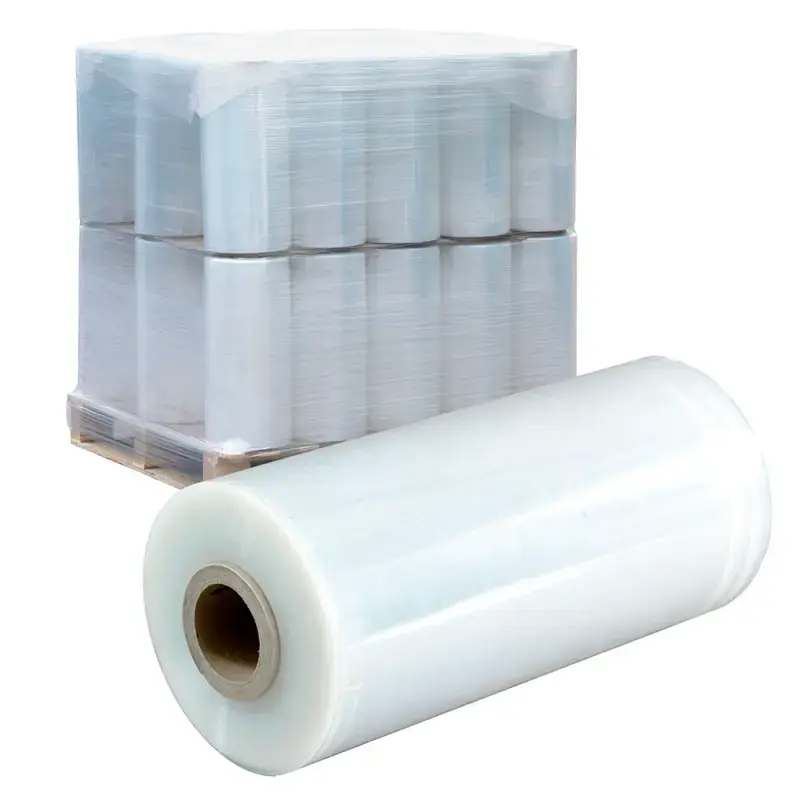Eco-Friendly Alternatives to Traditional Stretch Film Wrap
Stretch film wrap is a widely used material for securing goods during transportation and storage. It provides a convenient and flexible way to protect products while in transit. However, traditional stretch film wrap has significant environmental drawbacks. Manufacturing and disposing of these films contribute to plastic waste and pollution, making it a less sustainable choice.
Environmental Impact of Traditional Stretch Film Wrap
The production of traditional stretch film wrap involves the use of synthetic polymers derived from petroleum. This process requires substantial energy consumption and emits greenhouse gases, contributing to climate change. Studies show that each year, millions of tons of stretch film end up in landfills, taking centuries to decompose. Moreover, single-use stretch film not only contributes to plastic pollution but also leads to marine and land contamination, affecting wildlife and human health. The real-world impact is stark: microplastics from these films are found in our oceans, waterways, and even in the food we eat.

Innovations in Eco-Friendly Stretch Film Alternatives
In response to these environmental challenges, there are now several eco-friendly alternatives to traditional stretch film wrap. These alternatives aim to minimize environmental impact while maintaining the practical benefits of stretch film wrap.
One promising alternative is biodegradable polymers. These materials are made from plant-based raw materials and can decompose naturally, reducing the risk of plastic pollution. Natural fibers such as bamboo, jute, and hemp are another excellent option. These fibers are not only biodegradable but also have a lower carbon footprint compared to traditional polymers. Another innovative approach is the use of recycled materials, such as post-consumer and post-industrial plastic waste, to produce stretch film wrap. These materials help reduce the need for new raw materials and conserve natural resources.
Companies Leading in Eco-Friendly Packaging Solutions
Several companies are at the forefront of developing eco-friendly stretch film alternatives. For example, Naturese produces biodegradable stretch film wrap made from agricultural waste. They use starch-based polymers to create materials that are both environmentally friendly and convenient. SustainWrap, on the other hand, uses agricultural by-products to create stretch film wrap with a lower environmental impact. EcoPlastic also stands out by producing stretch film wrap from recycled plastic bottles, reducing the need for new raw materials and conserving natural resources. Each of these companies is making a significant impact in their respective industries.
- Naturese: Uses agricultural waste to produce biodegradable stretch film wrap, reducing the carbon footprint and landfill waste significantly.
- SustainWrap: Utilizes agricultural by-products to create stretch film, which is a practical and cost-effective solution for businesses.
- EcoPlastic: Recycles plastic bottles into stretch film wrap, conserving resources and reducing overall waste.
Comparative Analysis: Eco-Friendly vs. Traditional Stretch Film Wrap
A comparative analysis of eco-friendly and traditional stretch film wrap reveals several key differences. Eco-friendly alternatives generally have a lower environmental impact, which is a significant advantage. However, these alternatives often come with higher initial costs due to the use of more energy and resources during production. Natural fibers and biodegradable polymers may not be as durable as traditional materials, making them less suitable for all applications.
From a practical standpoint, traditional stretch film wrap is often more convenient for users who need to wrap items multiple times or require a flexible material. However, eco-friendly alternatives offer sustainable options that can meet the needs of environmentally conscious consumers and businesses. As these materials gain popularity, the convenience and effectiveness of eco-friendly stretch film wrap are becoming increasingly comparable to traditional alternatives. For example, SustainWraps sustainable stretch film is designed to be as durable and versatile as conventional options but with a much lower environmental footprint.
Challenges and Considerations for Widespread Adoption
While eco-friendly alternatives offer many benefits, there are several challenges that must be addressed for widespread adoption. The higher costs of eco-friendly materials and the limited availability of sustainable options are significant barriers. Many consumers are also not fully aware of the environmental impact of traditional packaging materials and may require more information to make informed choices.
Companies that adopt eco-friendly packaging practices should also focus on consumer education. This includes highlighting the environmental and economic advantages of sustainable packaging solutions. For instance, SustainWrap can work with customers to demonstrate how their stretch film is not only sustainable but also cost-effective in the long run. Additionally, there are practical considerations that must be managed, such as the transportation and disposal of eco-friendly materials. EcoPlastic can partner with logistics companies to optimize the collection and recycling of their products.
Conclusion
In conclusion, the shift to eco-friendly alternatives to traditional stretch film wrap is not just a choice; it is a necessity. Eco-friendly materials like biodegradable polymers, natural fibers, and recycled raw materials can significantly reduce the environmental footprint of packaging. By adopting these solutions, companies can make a meaningful impact on the planet while still maintaining the convenience and effectiveness of their packaging.
However, this transition comes with challenges. The higher costs of eco-friendly materials and the limited availability of sustainable options are significant barriers. But by embracing these solutions and working together to overcome these challenges, we can create a more sustainable future. Whether you're a business owner, consumer, or environmental enthusiast, the choice to adopt eco-friendly packaging is a critical step toward a healthier planet.
Embrace the change and join the movement toward sustainability. Together, we can make a difference.

